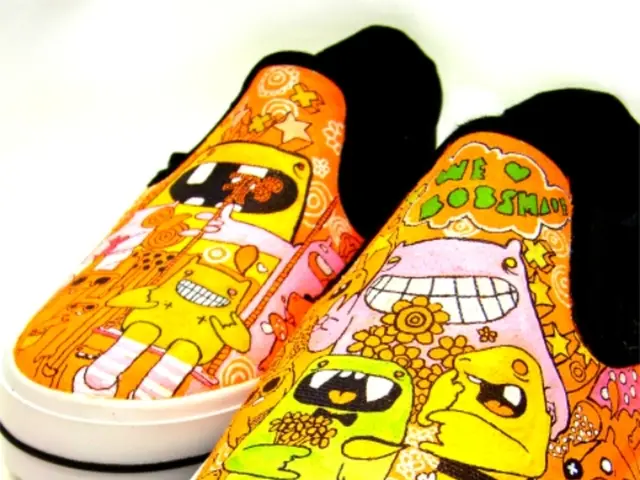Common Objects Holding Hidden Cultural Value
Everyday items like chopsticks, rugs, shoes, umbrellas, mirrors, fans, mats, jewelry, hats, and clocks may seem ordinary, but a closer look reveals the fascinating cultural heritage and traditions they embody. From eating utensils to footwear, these objects carry stories of respect, identity, and spirituality that connect us to our shared human experience. Here's an exciting exploration of some common items and their intriguing cultural connotations:
Chopsticks: More Than Just Utensils
- A Symbol of Respect: In Chinese culture, it's considered disrespectful to leave chopsticks standing upright in rice since it resembles incense sticks used during funerals.
- Craftsmanship: Chopsticks can symbolize status, with finely crafted and intricately designed chopsticks representing wealth and sophistication.
Hats: Crowning Identity
- Cultural Pride: Classical hats like the Mexican sombrero or Scottish tam o' shanter reflect a strong sense of cultural identity and pride.
- Ritual Respect: In African and Middle Eastern cultures, head coverings indicate respect and commitment to religious beliefs.
Jewelry: Adorning Cultural Narratives
- Status and Wealth: Gold jewelry is highly valued in Indian culture, serving as a representation of wealth, especially during weddings.
- Protection and Luck: Many African cultures use jewelry with specific stones or shells as charms for protection.
Mirrors: Reflection of the Soul
- Spiritual Symbol: Many cultures view mirrors as reflections of the soul, which is why they're often covered during times of grief to protect spirits.
- Balancing Energy: In Feng Shui, mirrors are used to maintain harmony and balance the energy in a space.
Shoes: Walking in Someone Else's Footsteps
- Traditional Identity: Indian traditional footwear like juttis or mojris are prominently worn during ceremonies to celebrate cultural pride.
- Respect and Cleanliness: Removing shoes before entering a home or temple demonstrates respect and cleanliness in Asian cultures.
Umbrellas: A Shade of Beliefs
- Protection: In Chinese and Thai cultures, red umbrellas provide protection during important ceremonies.
- Elegance and Grace: In Japan, traditional paper umbrellas (wagasa) are associated with grace and poise, often used in performances and festivals.
Fans: Not Just for Cooling Off
- Social Communication: In Spain, fans were once used to discreetly convey messages through specific gestures.
- Traditional Dance Accessory: Fans are an indispensable part of traditional Japanese dances, symbolizing grace and elegance.
Mats: Where Spirituality Meets Function
- Sacred Space: Japanese tatami mats define spaces with natural elements, frequently used in meditation areas.
- Spiritual Cleansing: In African cultures, mats made from reeds are used in rituals as a means of connecting with ancestors.
Clocks: The Pulse of Time and Tradition
- Symbol of Luck: In Feng Shui, clocks can bring luck; however, gifting a clock in Chinese culture implies "running out of time" and is avoided.
- Family Continuity: In some European traditions, old clocks or watches are passed down as symbolic reminders of family history.
Delving into the cultural meanings behind these everyday items provides us with a deeper understanding and appreciation of our diverse cultures and shared human experiences. By recognizing the symbols and traditions that shape our interactions with even the simplest objects, we gain valuable insights into various cultures and values. These items remind us that beauty and importance can frequently be found in the most ordinary aspects of our lives. As we continue on our journey to explore the world around us, let us celebrate the narratives each object carries, reminding us that the ordinary details enrich our identities and connect us on a global scale.
- Chopsticks, hats, jewelry, shoes, and mirrors are not only used in our daily lives but also embody significant cultural connotations, reflecting social practices, spiritual beliefs, and status in various societies.
- In the realm of fashion-and-beauty, hats like the Mexican sombrero and Scottish tam o' shanter represent cultural pride, while traditional Indian footwear reinforces identity during ceremonies.3.common items such as chopsticks, shoes, mirrors, and jewelry hold stories of respect, identity, and spirituality that connect us across food-and-drink, home-and-garden, and travel experiences, offering a deeper appreciation for our shared human experience.








